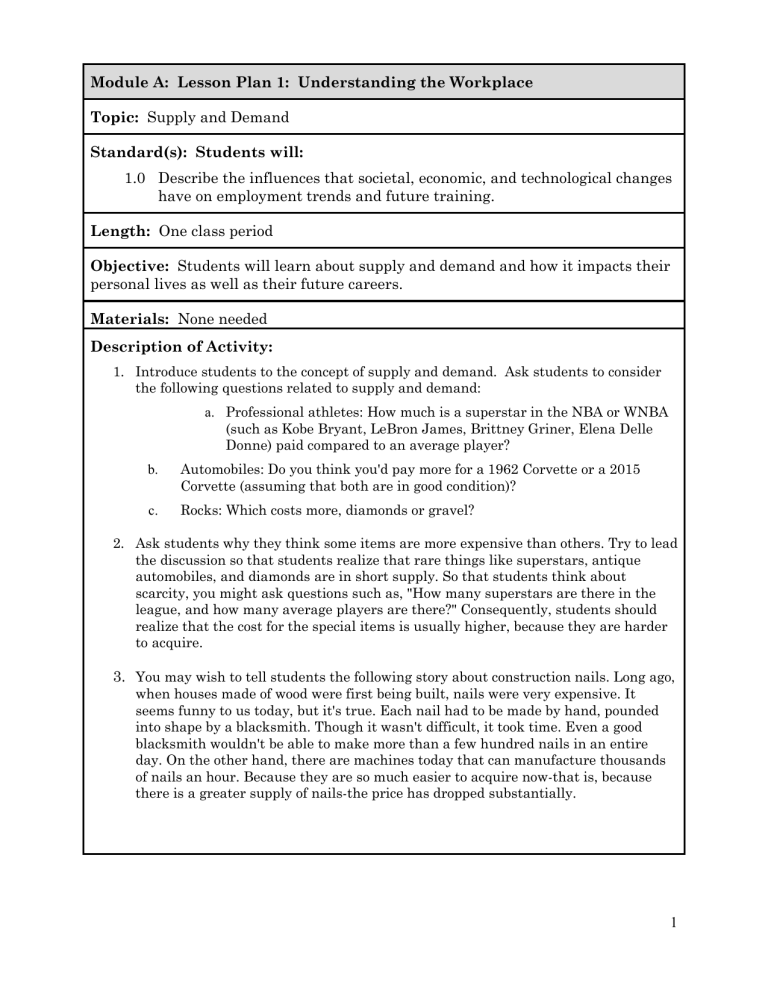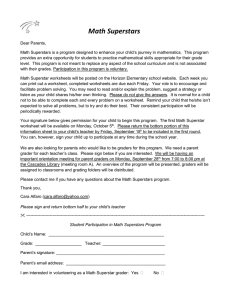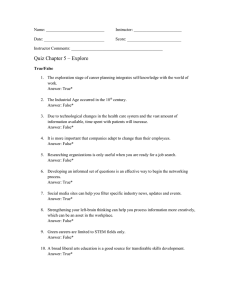
Module A: Lesson Plan 1: Understanding the Workplace Topic: Supply and Demand Standard(s): Students will: 1.0 Describe the influences that societal, economic, and technological changes have on employment trends and future training. Length: One class period Objective: Students will learn about supply and demand and how it impacts their personal lives as well as their future careers. Materials: None needed Description of Activity: 1. Introduce students to the concept of supply and demand. Ask students to consider the following questions related to supply and demand: a. Professional athletes: How much is a superstar in the NBA or WNBA (such as Kobe Bryant, LeBron James, Brittney Griner, Elena Delle Donne) paid compared to an average player? b. Automobiles: Do you think you'd pay more for a 1962 Corvette or a 2015 Corvette (assuming that both are in good condition)? c. Rocks: Which costs more, diamonds or gravel? 2. Ask students why they think some items are more expensive than others. Try to lead the discussion so that students realize that rare things like superstars, antique automobiles, and diamonds are in short supply. So that students think about scarcity, you might ask questions such as, "How many superstars are there in the league, and how many average players are there?" Consequently, students should realize that the cost for the special items is usually higher, because they are harder to acquire. 3. You may wish to tell students the following story about construction nails. Long ago, when houses made of wood were first being built, nails were very expensive. It seems funny to us today, but it's true. Each nail had to be made by hand, pounded into shape by a blacksmith. Though it wasn't difficult, it took time. Even a good blacksmith wouldn't be able to make more than a few hundred nails in an entire day. On the other hand, there are machines today that can manufacture thousands of nails an hour. Because they are so much easier to acquire now-that is, because there is a greater supply of nails-the price has dropped substantially. 1 4. Explain these terms: a. b. c. Supply: The total amount of a good or service available for purchase; along with demand, one of the two key determinants of price. A change in the price of the product will cause a change in quantity supplied. Demand: The willingness and ability of the people within a market area to purchase particular amounts of goods or services at a variety of alternative prices during a specified time period. The Law of Supply and Demand: The price of an item will go down if the supply increases or if the demand for the item decreases. The price of an item will go up if the supply decreases or if the demand for the item increases. In general, the price of an item is usually pushed toward the level at which the quantity supplied will equal the quantity demanded. 5. Relate each of these terms to an example from the Introductory Activity. For instance, you might point out that the supply of superstars is low yet demand for them is high, so their price is high; in contrast, there is a greater supply of average players and the demand for them is not as high as it is for superstars, so their price is relatively low. 6. Ask students, "What effect do you think the law of supply and demand has on your life?" Encourage students to come up with ideas about how supply and demand affects the prices of items they want, such as CDs, videogames, skateboards, and clothes. Call on 3 to 5 students to share some of their thoughts with the class. 7. Discuss the effect of supply and demand on the workplace. If there is a shortage of workers in a certain field, the demand will increase and competition will be keen for companies that are looking for trained workers. Many companies may offer salary packages that include bonuses, higher than average salaries, payment of employee’s student school loans, assistance with purchasing home, etc. Discuss an example of careers such as teachers, Information Technology, lawyers, etc. and how supply and demand has impacted those careers. Students can look at job projections for occupations to determine the number of openings that are projected for the future. Information will show if they are increasing or decreasing in demand or if they are stable. To find data, go to http://www.floridajobs.org/labor-market-information or look at the national listings on the Occupational Outlook Handbook website at http://www.bls.gov/ooh/. . Evaluation: Students will be able to describe supply and demand not only in the products they purchase but also in the workplace. 2


